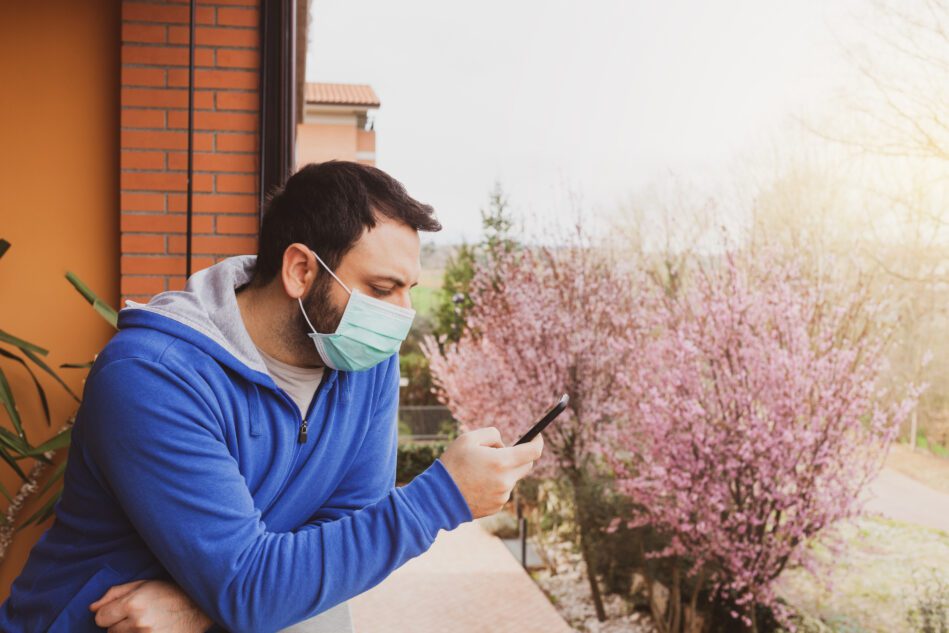As I sit in the luxurious isolation of my weekend home in New Jersey, I wonder whether it was really necessary to abandon my NYC apartment and my friends? Am I patriotically following the best advice of our leaders, or am I a scaredy-cat getting spooked by all the negative news? I’m healthy and unlikely to die of COVID-19, so is it selfish for me to accept the risk and interact with people? Will cutting myself off from friends, exercise and human interaction cause harm to me psychologically?
What arguments could sweep away the societal benefits of keeping schools open (feeding children, keeping kids active and safe, separating college students away from at-risk parents and grandparents) or allowing restaurants to serve food? We need food. What will the employees of all these small restaurants live on? What will the small businesses of America look like after forced closure for a month or two?
Until we have drugs that effectively treat the coronavirus and/or vaccines that prevent it (“pharmacologic’ response), we are stuck with public health measures (NPIs or “non-pharmaceutical interventions”).
The primary concern of those watching the big picture is if our hospitals can manage all the sick people who will need care. We’ve seen Italy’s heartbreaking shortage of hospital beds and respirators. The simple calculation that we have fewer hospital beds per person than Italy and a healthcare shortage is very much a possibility, even a likelihood, in the US.
Hospital beds per 1,000 people:
- US – 2.770
- Italy – 3.180
- China – 4.340
- South Korea – 12.70
Source: OECD, Organization for Economic Co-operation and Development
A study came out yesterday that modeled the effect on the US and UK populations of two different social strategies: mitigation and suppression. The study is from the UK-based Imperial College COVID-19 Response Team, which is comprised of: WHO Collaborating Centre for Infectious Disease Modelling, MRC Centre for Global Infectious Disease Analysis, Abdul Latif Jameel Institute for Disease and Emergency Analytics, and Imperial College London.
Mitigation’s goal is to slow the epidemic spread, giving healthcare systems more time to boot up and fewer sick people to care for. Mitigation combines the home isolation of suspect cases, home quarantine of those living in the same household as suspect cases, and social distancing of the elderly and others at most risk of severe disease. This is much of what the US had been doing.
The model indicates Mitigation steps could cut the demands on our healthcare system by two-thirds and cut deaths in half. However, the Mitigation strategy would still result in hundreds of thousands of deaths and overwhelm our health systems “by at least 8-fold under the more optimistic scenario.” So Mitigation is literally, “too little, too late.”
Suppression strives to reverse the epidemic growth and reduce the cases dramatically to a level our healthcare system can address. Suppression requires a combination of social distancing of the entire population, home isolation of those with confirmed infection and household quarantine (required isolation) of their family members. It suggests closing schools and colleges, after an evaluation of the negative impacts on health systems due to increased absenteeism. New York City has addressed that issue by supplying free childcare to health workers, and other cities may follow suit.
This is the measure the US is turning to, particularly in heavily hit areas. Here’s the problem with Suppression strategy, it needs to be universal and will have to stay in place until we have a vaccine, maybe 18 months from now. The model shows that the stringent limitations can be lifted from time to time, but will have to be reinstated immediately as outbreaks recur. Suppression strategies of social distancing, school and group meeting closures would need to be in place “at least two-thirds of the time.”
There is no known cure for coronavirus or COVID-19 yet. However – a new study from Wuhan, China published in JAMA found that treatment with methylprednisolone may be beneficial for patients who develop acute respiratory distress syndrome (ARDS), which is caused by COVID-19.
Until there is a pharmaceutical breakthrough we are looking at a long, difficult challenge to our society and how we interact with each other. The numbers of infected are not leveling off, in fact, the rise is frightening: The number of confirmed COVID-19 cases surpassed 5,000 in the United States today, increasing fivefold over one week ago.
Some hope from technology — we could develop mobile phone apps, as South Korea has, that track your interactions with other people in society (contact tracings) so that outbreaks can be identified down to the person and social group. But that’s a huge invasion of privacy that US citizens may rightly object to.
This study is a grim picture. The coronavirus is not likely to be the last new threat from viruses or bacteria. Are we setting a model for how we deal with epidemics? And is it a model we can live with?






